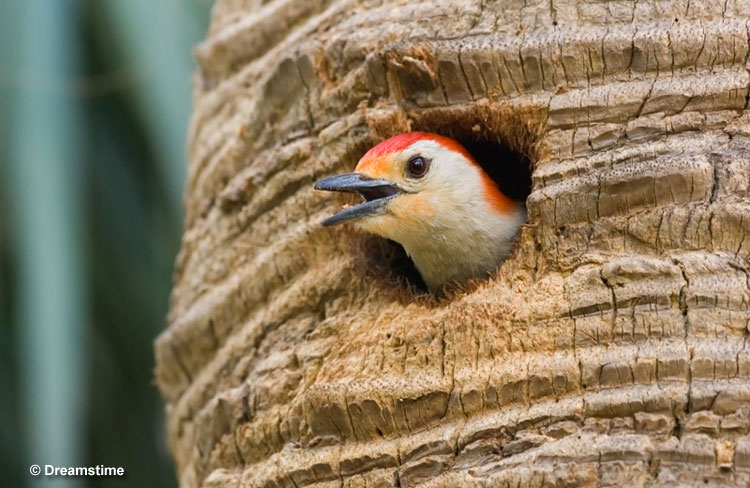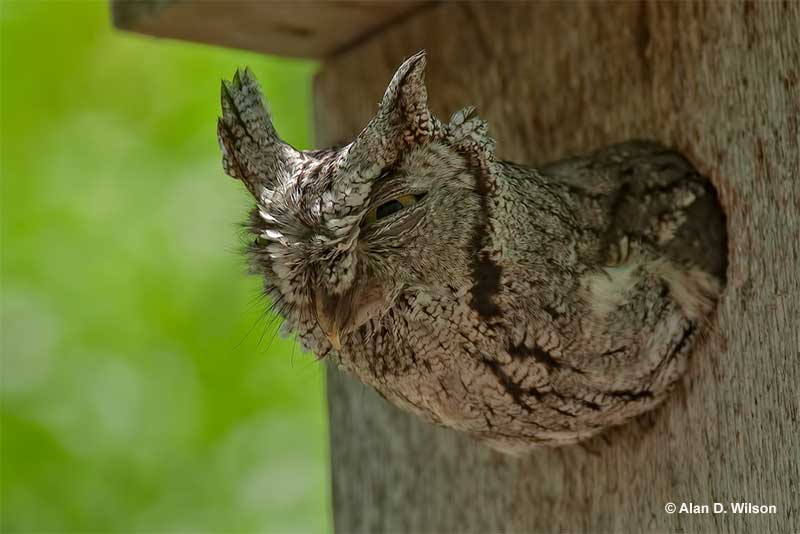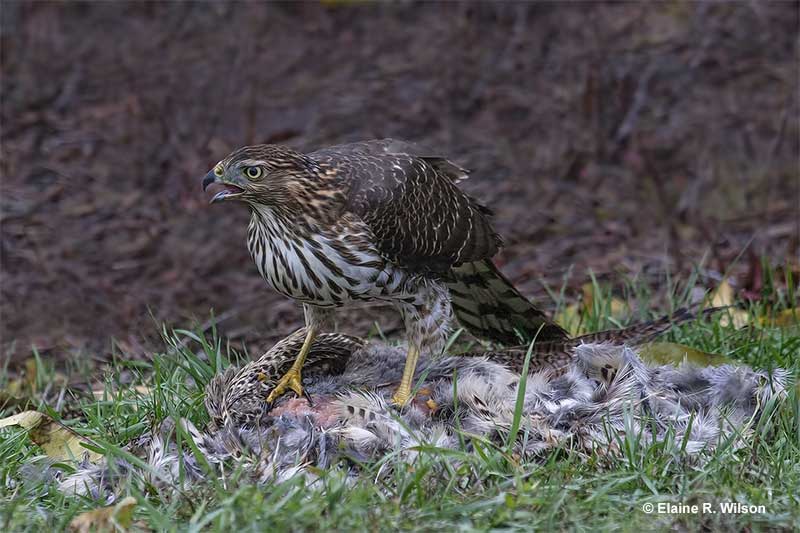
Birds are mostly diurnal.
Yes, owls, nightjars, and other nocturnal species only come out at night but the majority of bird species are active in the day, just like us.
We hear and see birds during the light of day but as soon as it starts to get dark, all of a sudden, it’s as if they vanish. When night falls, where do those birds go? What do they do?
See this article to learn the answers and all about what birds do at night!
On this page
During Breeding Season
At night, birds get rest. However, in the breeding season, they can’t sleep wherever and whenever they want. Just like human parents, they have babies to take care of. So what do they do? How do they get rest?

Oh, seems like it’s 2 PM, not 2 AM
During the breeding season, most mother birds simply sleep on their nest. This way, they can rest in a comfortable spot while also taking care of their young and, most importantly, keeping them warm.
In essence, even if they wanted to sleep somewhere else, they couldn’t. At least not if they wanted to keep their young alive.
During incubation, parents birds can’t sleep off of their nests because they have to maintain a certain temperature for their eggs. If that temperature changes too much, the eggs won’t hatch.
After the eggs hatch, at least one of the parent birds still needs to spend each night on the nest. They have keep the young birds warm, especially at night.
Related: Do birds fly at night?
While the mother bird carries out much of these incubation and brooding duties, that’s not the case for every bird species. For some birds, males also incubate and brood, even at night.
Take most woodpeckers, for example. After females incubate or brood during the day, males do all of the nesting duties at night.
Non-Breeding Season
After birds have raised young, they don’t have any reason to stick around their nest. Actually, most don’t want to, especially small birds.
Most species leave as soon as they can because the longer they stay, the more likely some predator will notice their nest and pay a nocturnal visit for an easy meal.
With that in mind, once the young have fledged, birds don’t usually sleep anywhere near their nest. Instead, they find another safe spot to spend the night, preferably near a good food source.
Such sleeping spots are usually still located on the bird’s territory. However, species that form flocks can spend the night in any number of places. The most important factor is roosting near each other in a safe and warm enough spot.
During migration, species like the Swainson’s Thrush and many other birds actually fly during the night and get rest during the day. However, when they arrive on their wintering grounds, they still have to find a suitable place to spend each night.
Many sleep on their own but species like the Baltimore Oriole, Scissor-tailed Flycatcher, and Rose-breasted Grosbeak spend the night roosting with many other small birds. They typically sleep in mangrove forests and other spots that provide some protection from predators.
The Importance of Having A Safe Place
Finding the right place to sleep is a vital task for every bird. Actually, it’s no exaggeration to call this decision one of life and death. If a bird picks the wrong place to sleep, a predator will find and catch it.
Several predators come out at night, and most would love to catch a roosting bird. Raccoons and other nocturnal mammals carefully creep around trees and bushes in search of prey. In some places, there are also snakes on the prowl, and owls are a constant threat.

Birds are constantly in danger, they even have to worry about other birds!
Small birds also pick a spot with vegetation that can help hide and shelter them while also providing an escape route. Other small birds, like chickadees and woodpeckers simply sleep in tree cavities.
To avoid these and other predators of the night, birds use a few different strategies. Small birds like warblers and vireos can sleep on a thin branch high above the ground. If a predator comes near, the branch moves, awakes the small bird and it can fly away.
Birds also pick roosting spots that are difficult for predators to access. Such safe sleeping areas can take the form of roosts in mangrove forests, swamps, and other places with standing water.
Frequently Asked Questions
Do birds go to the same place every night?
No, birds do not go to the same place every night. To avoid predators, most species use several different roosts.
Where do most birds go to sleep at night?
Most birds go to sleep at night in a safe and/or protected spot. This can be a tree cavity, in dense vegetation, or bushes and trees above standing water.
Do birds sleep through the night?
No, birds do not sleep through the night. Although they rest all night long, most birds sleep for several brief periods of time. Many also sleep with one eye open and can get rest while still being alert.
What time of day are birds most active?
Birds are most active during the first two hours of the day, and in the late afternoon.

